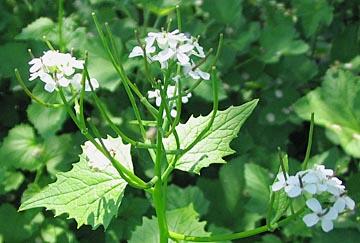 Flowering plants can help spruce up common areas around the clubhouse or parking lot, out-of-play areas and even near teeing grounds. But choosing the wrong one can be the difference between an aesthetically pleasing ornamental and a proverbial wolf in sheep's clothing.
Flowering plants can help spruce up common areas around the clubhouse or parking lot, out-of-play areas and even near teeing grounds. But choosing the wrong one can be the difference between an aesthetically pleasing ornamental and a proverbial wolf in sheep's clothing.As turf managers turn their attentions toward spring and making golf courses green again, the Weed Science Society of America says it is a good idea to conduct some research before making any final decisions on ornamentals so as not to unknowingly planting any invasive species.
Many invasive ornamentals that have been transplanted from other countries can tolerate poor growing conditions, thus allowing them to grow quickly and densely and can easily become difficult to control. In fact, many invasive species, although attractive when they flower, can exhibit different growing characteristics when out of their native range and are considered noxious weeds here.
One such example is Scotch thistle. Though it was introduced into this country more than 200 years ago from Europe, Scotch thistle is a weed in this country. It thrives in drought conditions and is difficult to kill, making it especially troublesome in parts of the arid west.
Although Scotch broom might be perfectly fine for use as an ornamental on a golf course in Europe, in this country it is a non-native species that is difficult to control. It produces pretty flowers, but it is an ugly neighbor, crowding out native species and producing thousands of seed per plant per year that can remain dormant yet viable for several years.
Dalmatian toadflax is a member of the snapdragon family and is native to areas around the Adriatic and Mediterranean seas. Surely, anything so exotic would be a welcome addition to any area where ornamentals are planted, right? Wrong. Unlike its native cousin, the Dalmatian toadflax is perennial that keeps on growing, can take over open spaces and is toxic to some wildlife.
Many of these invasive species are sold as ornamentals, either through online outlets or nurseries, so procuring them is easier than it probably should be.
A complete list of invasive species can be found on the U.S. Department of Agriculture National Invasive Species Information Center Web site.
The site includes information on invasive plants and aquatics, including photographs, native range, when and how they were introduced here and control tips.

